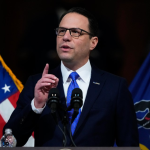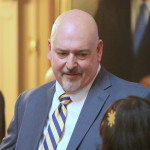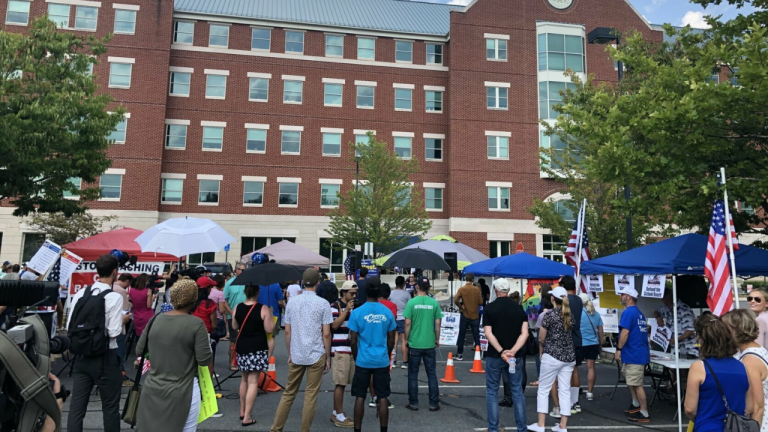In a significant development, the U.S. Environmental Protection Agency (EPA) is poised to reject California’s air pollution reduction plan for Los Angeles, potentially triggering economic sanctions and federal regulatory oversight for the region grappling with severe smog issues. The rejection could intensify challenges for Southern California, known for having the strictest air pollution rules in the country.
Struggle with Ozone Standards Persists
Despite Southern California implementing stringent air pollution regulations, the region has consistently fallen short of meeting federal health standards for ozone, commonly referred to as smog. The struggle persists, and state and local air regulators are mandated to submit plans outlining how they intend to reduce pollution and align with federal standards.
Acknowledging the need to reduce smog-forming nitrogen oxides by over 100 tons per day to meet the 1997 ozone standard, the South Coast Air Quality Management District proposed allocating at least 67 tons per day to the federal government. The argument hinges on the fact that major sources of smog-forming emissions, such as ships, trains, and aircraft, fall under federal jurisdiction, limiting the local air quality officials’ regulatory authority.

Read more:
- Trans Drivers Unable to Change Gender on Licenses in Florida
- Northern Lights Treat for New Mexico Residents!
- Razor Wire Presence Strengthened at Shelby Park in Texas
- NY Lawmakers Push for In-State Drug Production to Lower Costs
EPA’s Draft Response Raises Concerns
In a draft response, the EPA has signaled its intention to reject California’s proposal, asserting that states lack the authority to order the federal government to reduce pollution under the Clean Air Act or the Constitution. This potential rejection opens the door to economic sanctions and federal intervention, impacting the nation’s most smog-affected region.
Local Air Officials Push Back
Local air officials responded assertively, laying blame on the EPA for the damaging health effects of Los Angeles smog. They argued that the EPA has failed to offer solutions for emissions from sources beyond the local jurisdiction’s control. The South Coast Air Quality Management District expressed disappointment, emphasizing its commitment to taking appropriate actions to prevent the proposed decision from becoming final.
The air district issued a statement, stating, “U.S. EPA’s draft decision is disheartening. South Coast AQMD intends to comment on this new proposal and take all appropriate actions in hopes that this decision does not become final. More importantly, U.S. EPA will need to answer the millions of residents, especially children, who have asthma, lung disease, and other illnesses associated with air pollution that continue to suffer.”
Implications of Rejection
The EPA’s rejection, if finalized by the July 1 deadline, could have far-reaching consequences. The federal government may withhold billions of dollars in highway funding, impose strict requirements on new permits, and even institute a federal plan to address smog. Historically, the EPA has disapproved of the air district’s plans multiple times, but the region has managed to avoid sanctions.
Clash Between Southern California and the Biden EPA
The potential denial marks the latest clash between Southern California air regulators and the Biden administration’s EPA, highlighting a two-year-long disagreement on addressing the region’s persistent smog challenges. The complexity of regulating pollution in the area, with multiple entities having jurisdiction, adds to the ongoing struggle.
Environmental Advocates Highlight Collective Failure
Some environmental advocates argue that the current dilemma reflects a collective failure by every level of government. Adrian Martinez, a senior attorney with Earthjustice, emphasized that the conflict follows years of delays and extensions, where all three environmental agencies had the capacity to implement more emission reductions.
“The plan to meet our clean air standards relied on these faith-based assumptions that we’ll figure out how to reduce the pollution at a later time. And what ended up happening is we never figured it out,” Martinez commented.
Southern California’s Smog History
Southern California has a long history of grappling with smog, a consequence of vehicle exhaust and industrial emissions interacting with the region’s abundant sunlight. Despite progress over several decades, including cleaner vehicle engines and industry pollution controls, the region still contends with the worst smog levels in the country.
Legal Battles and Regulatory Pressures
The South Coast Air Quality Management District previously sued the EPA for violating the Clean Air Act, contending that compliance with federal smog standards was impossible without significant cuts from federal sources. The legal action aimed to compel the EPA to adopt new regulatory strategies targeting pollution from ports, railyards, and airports.
While the Biden administration has implemented tighter vehicle emission standards, including for heavy-duty trucks, some argue that federal requirements still fall short compared to California’s more stringent rules, which the state can implement with federal approval.
Complexity of Regulatory Landscape
The regulatory landscape in Southern California involves multiple entities, including the local air district overseeing smokestack emissions, the California Air Resources Board governing in-state vehicles, and the EPA handling interstate and international travel. The intricacies of coordinating efforts among these entities contribute to the challenges faced in curbing smog effectively.
Public Input and Future Steps
The EPA’s proposed disapproval is open to public comments until March 4. If finalized, California will have 18 months to secure the federal agency’s approval for a new plan. Failure to meet the deadline could lead to stringent measures, including withholding highway funding and federal enforcement of a smog reduction plan.
As the region awaits the EPA’s final decision, the clash underscores the ongoing battle against air pollution and the collaborative efforts needed to address the complex challenges posed by smog in Southern California.


























+ There are no comments
Add yours